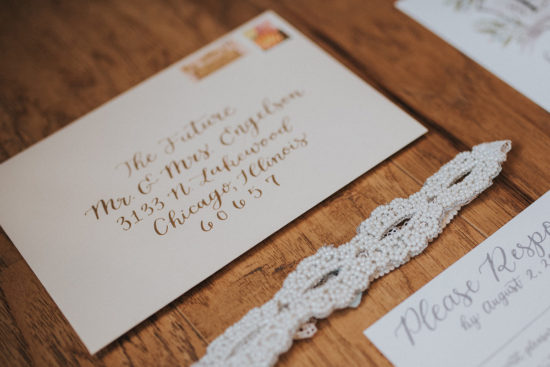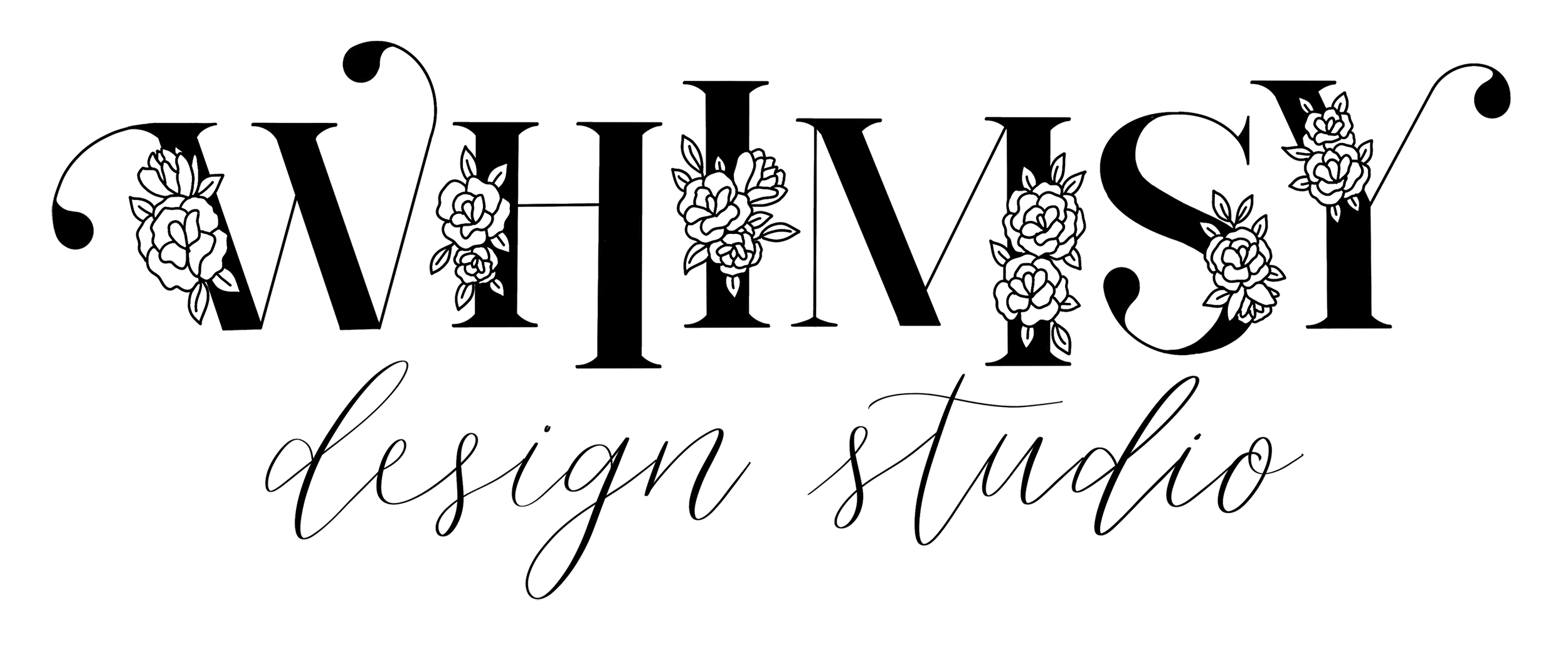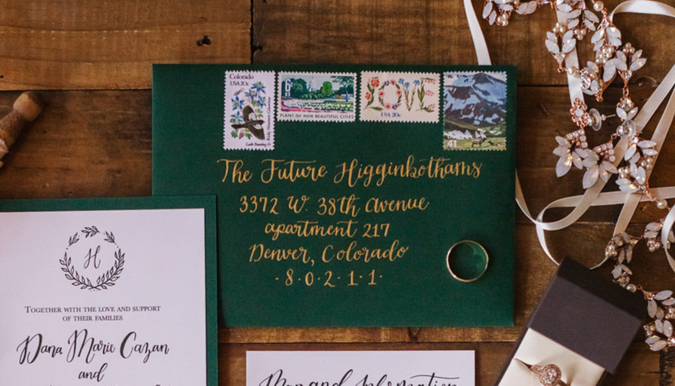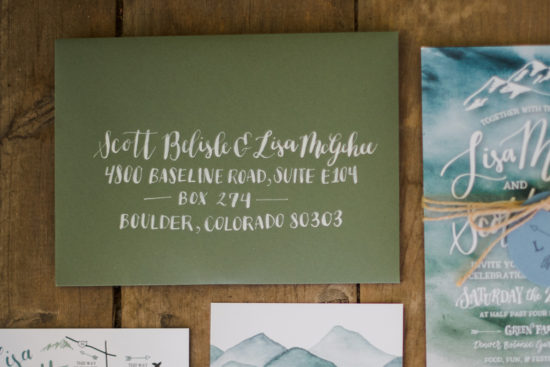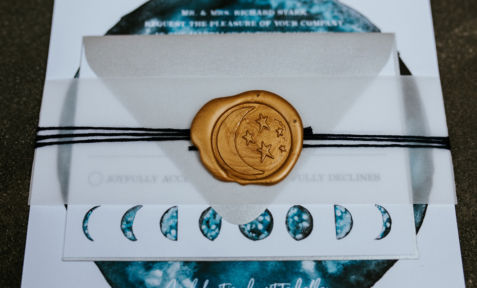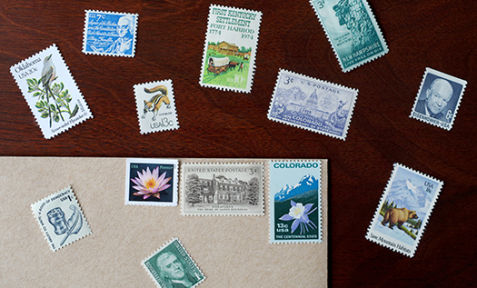Gathering your guest list and addressing your wedding invitations according to the “rules” can be a daunting task. Whose name is listed first? How do you handle non-traditional couples? Should you spell out the state or keep it abbreviated? There are so many different opinions on the best way to address envelopes and truthfully there is no “wrong” answer but we’ve gathered our Top 10 Envelope Addressing Tips to help ease the stress of using “proper etiquette” guide you through the process.
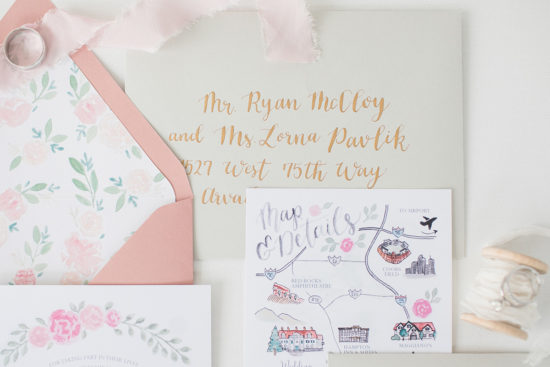
1. Points for Penmanship
Writing out your guest’s addresses by hand is a personal touch for your invitations that sets a warm, inviting tone for the event. Hate your handwriting? Hire a calligrapher or enlist the help of a friend! Digitally printing guest addresses can sometimes be appropriate when it matches the style of the invitation (typically a design that already relies on modern typography) or if you are in a serious time crunch, but please NEVER use adhesive mailing labels.
2. Who’s invited?
It seems obvious, but the best way to signify who is invited is to correctly address your invitations and list each adult by name. This includes married couples with and without the same last name, un-married couples, families, and children (more on that later).
3. Inner & Outer Envelopes
If you’re including an inner and outer envelope (either out of tradition or to protect your beautiful envelope liner), guest addressing can be a bit confusing. Typically the outer envelope is for the guest’s full address and formal title while the inner envelope is less formal, listing all persons invited. For example,
Outer Envelope:
Mr. Martin & Mrs. Anna Burke (OR Mr. and Mrs. Burke)
5432 Evergreen Boulevard
Denver, Colorado 80202
Inner Envelope:
Martin & Anna
4. Children and Families
Are you inviting children or having an adults only reception? If you are not inviting children, simply DO NOT include them on the invitation. If you are including children, you have two options:
“And Family” – simply add this after the parent’s names
Mr. Martin & Mrs. Anna Burke and Family
List all children – this is best if you are only inviting older children, for example:
Mr. Martin & Mrs. Anna Burke
Jim and Sarah Burke
Send each guest over the age of 18 their own invitation, even if they live in the same house as their parents receiving an invite.
5. Plus Ones
If you are inviting non-married persons and extending a plus one invitation, let them know by including “and Guest” after their title on the envelope.
For example: “Mr. Paul Underwood and Guest.”
Inviting a non-married friend with a long-term (typically over a year) or live-in significant other? Please learn their significant other’s name and include it on the envelope! Writing “and guest” instead of their name can be insulting to the sincerity of their relationship.
6. Titles Matter
Using titles such as Mr. Ms. & Mrs. are truly a personal choice and dependent on the level of formality you are comfortable with. But titles are particularly necessary to include when the guest has a distinguished title such as doctors, judges, or military personnel. Your guests have earned these titles and it is disrespectful to forgo including them. When in doubt, ask before addressing! Doctors are the most common question we get, for example:
If the Husband is Doctor: Dr. Jim & Mrs. Kathy Adams (OR Dr. & Mrs. Adams)
If the Wife is Doctor: Dr. Kathy & Mr. Jim Adams (OR Dr. & Mr. Adams)
It Both are Doctors: The Doctors Adams
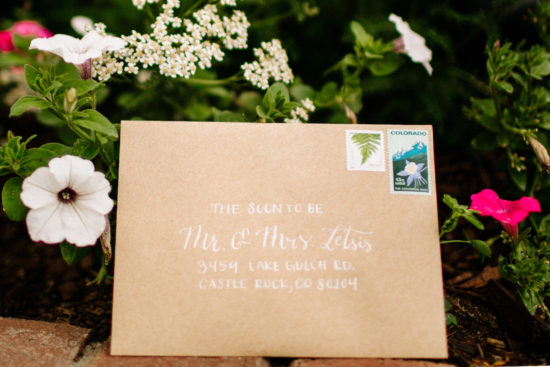
7. Spell it out (when you can)
This is one of those times I like to deviate from “proper” etiquette. As a general rule it is best to spell everything out and not abbreviate; but the truth is that sometimes when hand writing long addresses everything just won’t fit! When it can, it’s best to spell out “street” or “apartment,” etc. as well as states and roadways. Please note that this does not apply to titles such Mr., Mrs., Dr., etc.
8. Apartment Numbers
Again, it is best to write out “apartment” or “unit” instead of abbreviating. The best way to make room for these (and ensure they are read correctly) is to give apartments, units, or building numbers their own line. For example:
Dr. Kathy & Mr. Jim Adams
5432 Evergreen Boulevard
Apartment 3632
Denver, Colorado 80202
9. Zip Codes
This one is not a hard and fast rule, but rather a stylistic preference. Most modern calligraphers choose to drop the zip code to it’s own line. This makes room for the city and state to be fully spelled out (not abbreviated). I personally prefer this style, but it’s certainly not for everyone!
10. Return Address
Lastly, don’t forget to include a return address! The back flap of the envelope is a great place for this and leaves ample room for the receiver’s address on the front. We recommend ordering a stamp of the return address or having this printed on your envelopes to make assembly easier.
